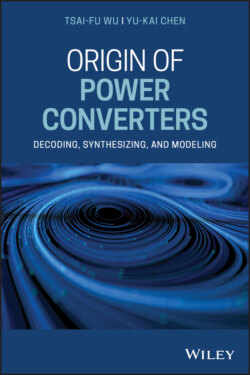Читать книгу Origin of Power Converters - Tsai-Fu Wu - Страница 35
2.2.4 Inverse Operation
ОглавлениеBy exchanging the roles of the active and passive switches in the converters shown in Figure 2.6, we have the inverse converters, as shown in Figure 2.7, and their corresponding transfer ratios can be derived as 1/D, (1 − D), and (1 − D)/D, which are the reciprocals of D, 1/(1 − D), and D/(1 − D), respectively. These codes provide more choices for decoding transfer codes. Illustrations of decoding the transfer codes of PWM converters in terms of the fundamental codes discussed previously will be presented in later chapters.
Figure 2.7 (a) Inverse buck, (b) inverse boost, and (c) inverse buck‐boost with the transfer ratios of 1/D, (1 − D), and (1 − D)/D, respectively.
Typically, the inverse converters do not operate independently since its output sink will transfer power back to the input source in unidirection. They usually work with other regular converters to control power flow between input and output, which can achieve higher step‐up or step‐down power conversion. The regular and the inverse buck, buck‐boost, and boost converters are considered the fundamental converters since in the decoding process, their transfer codes will be used frequently and they are with second‐order filters only.
